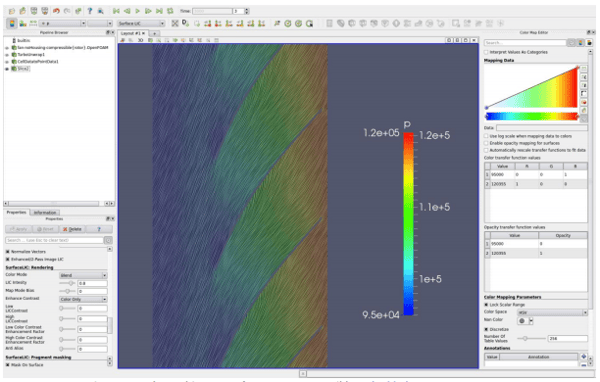Designing turbomachinery poses a variety of challenges, from meeting rigorous safety standards and ensuring reliability, to reducing operation costs and improving time to market. The task demands an innovative approach that doesn’t rely on costly prototyping or physical testing.
Meanwhile, optimization of these turbomachinery designs offers enormous potential return on investment; according to ANSYS, each 1 percent increase in efficiency could save $66 billion in the gas powered electrical industry, or $30 billion in air transport over 15 years. However, these designs require sophisticated computational simulations performed on complex high-performance computer systems.
The good news is that novel software containers have recently emerged as a means for simplifying the access and improving performance of the complex CFD simulations in the cloud required for the design of turbomachinery, offering multiple benefits:
- Easy access to more powerful high-performance computing resources in the cloud
- Ability to scale the number of parallel simulations, minimizing time to market
- More detailed simulations, resulting in higher quality turbomachines
- Faster simulations, which also improve time to market and increase competitiveness
Case Study: Radial Fan CFD Simulation in the Azure Cloud
UberCloud recently partnered with CFD Support Ltd in Prague to explore performing complex CFD analysis of a radial fan using containerized Turbomachinery CFD (TCFD), based on OpenFOAM. The team calculated the radial mechanical fan characteristics in the Azure Cloud, on different numbers of cores, with the goal of testing current fan design and getting the best fan efficiency to save energy costs.
In practice these CFD simulations are very demanding, because of their complexity and the number of simulations to run. All the rotating machines need to be simulated to test, confirm or improve its aerodynamic efficiency, which has a major effect on its energy consumption. Each machine design is tested many times and is optimized to find the best efficiency point.
In this case, the fan model was designed in CFturbo, a powerful software for interactive turbomachinery design that allows the designer to either start a model from scratch or redesign existing geometries. Designed model data was then exported from CFturbo and uploaded into TCFD along with the relevant initial physical flow data. This CFD methodology employed a multi-region approach, so the model was split into a certain number of regions. Each region was computed separately and communicated with other neighboring regions via interfaces.
 |
| The figure above illustrates the turbomachinery CFD fan nq28, compressible turbo blade post streamtraces. |
The CFD workflow was fully automated, and the user ran one single script. The mesh was created automatically within snappyHexMesh. Every region had its own mesh. In this case there were two independent regions (and independent meshes): rotor and stator.
Results
This case study illustrates the performance benefits offered by the Azure Cloud together with UberCloud software containers. CFD Support considers the UberCloud service to be a viable alternative to a powerful local workstation.
 |
| The table above shows the performance comparison for local workstation versus Azure Cloud G5 instances and different number of cores. |
Additional benefits include on-demand user-friendly access and use of the software and hardware resources; and a reduction in overhead required for managing virtual instances and maintaining software updates. The team concluded the following:
- The Azure cloud solution, together with UberCloud’s software containers provides excellent performance advantages for TCFD users who want to obtain higher throughput or analyze larger, more complex models.
- Azure Cloud and UberCloud effectively complement (or even eliminate) the need to maintain appropriate in-house HPC expertise.
- The container approach provides immediate access to suitable high performance computing resources and application software without software or hardware setup delays.
- The browser-based user interface is simple, robust and responsive, and it enables interactive and batch work.
The full case study is included in UberCloud’s Compendium of Case Studies in Computational Fluid Dynamics, which includes 36 unique cases.



